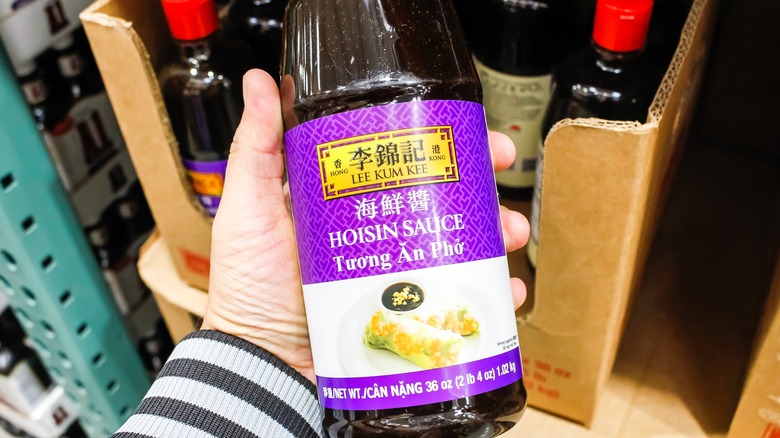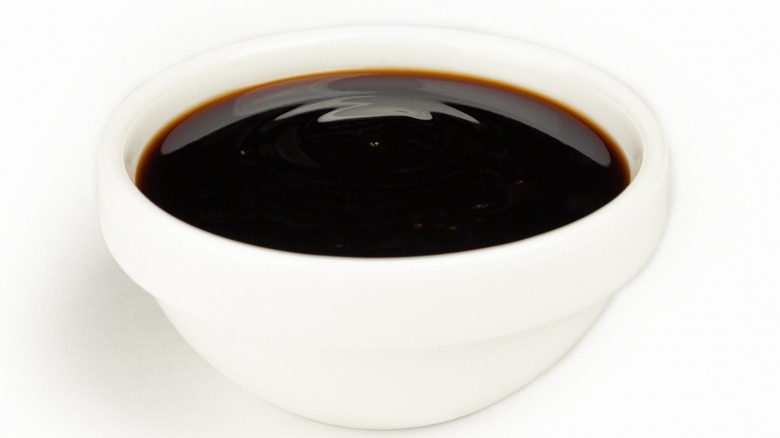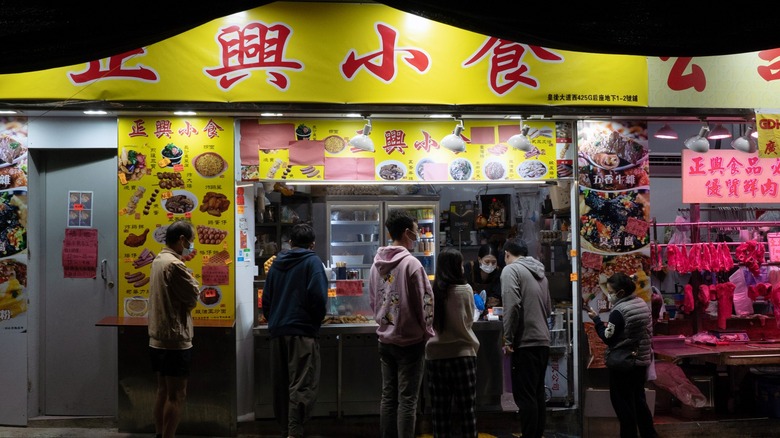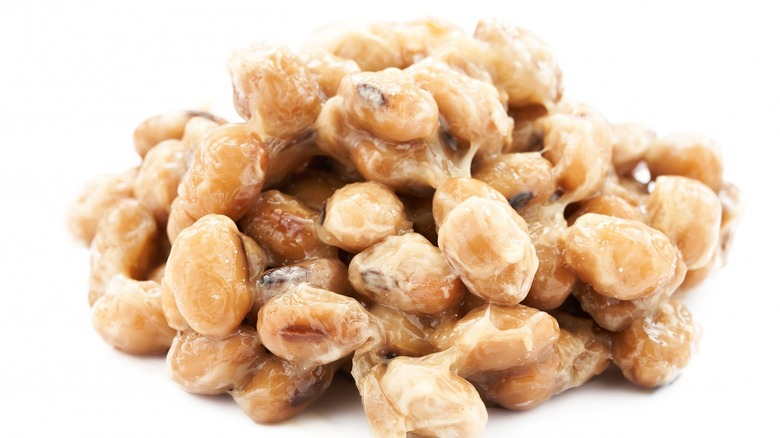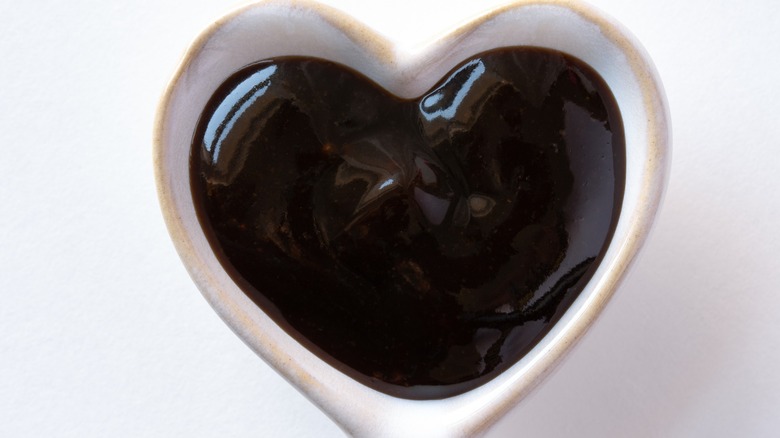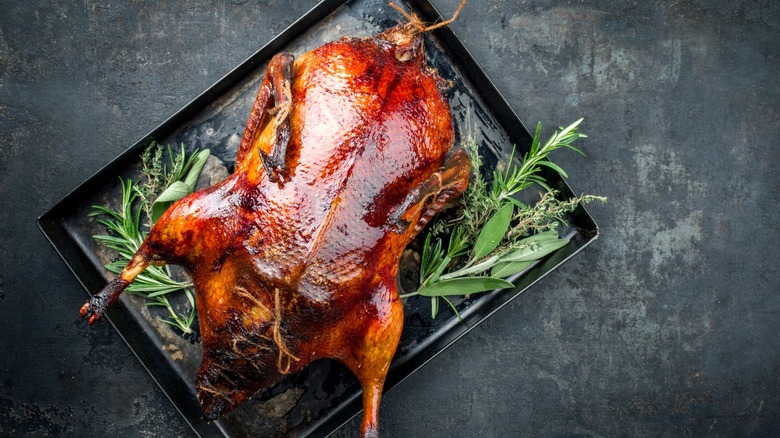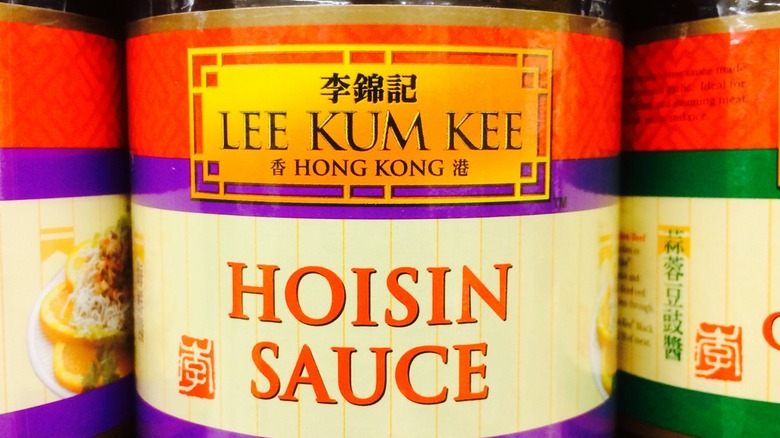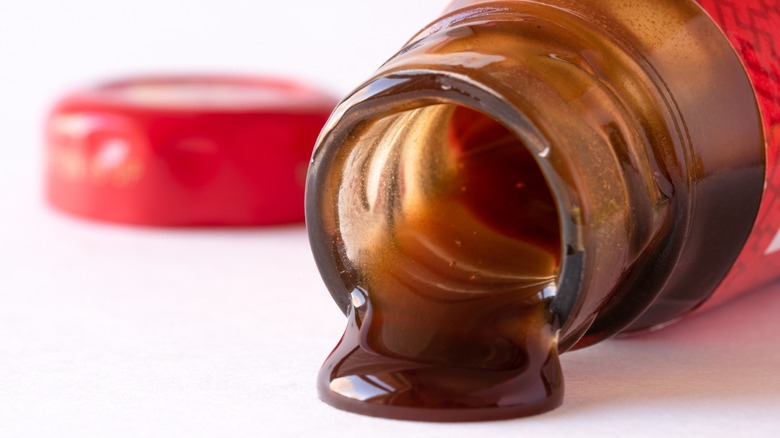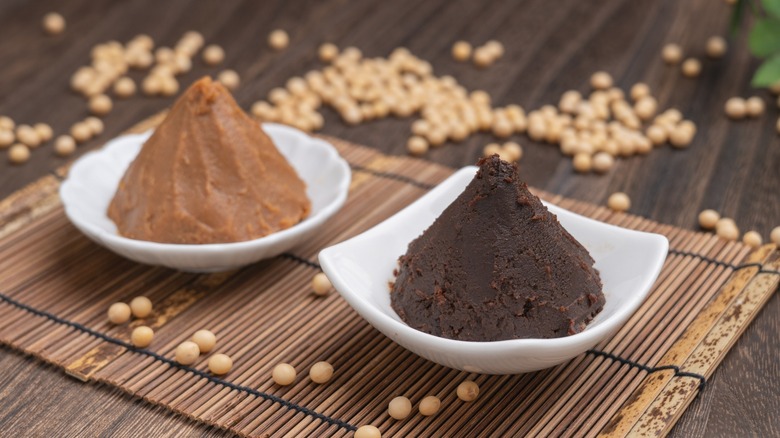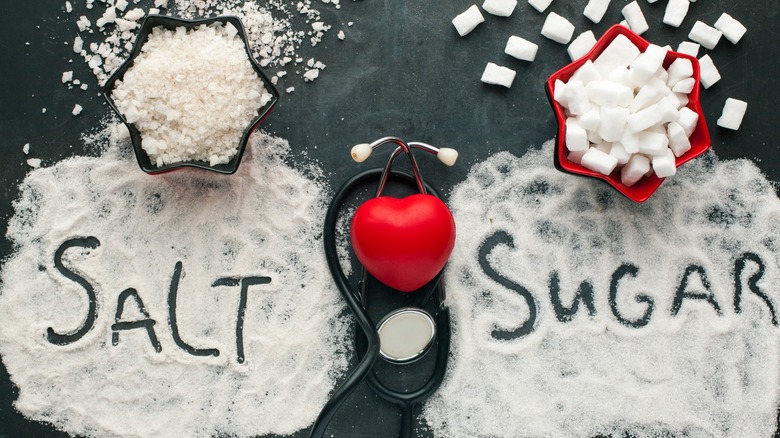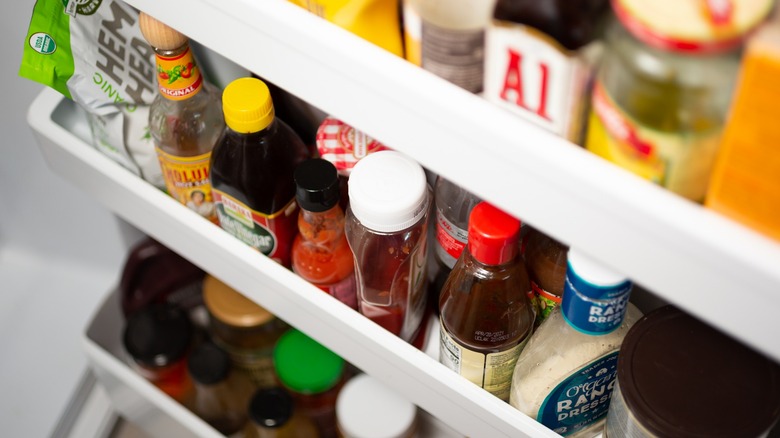The Ultimate Guide To Hoisin Sauce
As somebody who cooks a LOT of Chinese food — well, Asian food in general — I use Hoisin sauce a lot in stir-fries, marinades, and to make dips for meatballs and other ingredients. This sweet, salty, sticky brown sauce is packed with flavor and delicious, no matter how you use it.
But how much do you really know about the popular Cantonese ingredient Hoisin sauce? It's easy to confuse Chinese cooking sauces — for example, do you know how oyster sauce and Hoisin sauce differ? In this ultimate guide, we'll look at everything you need to know about Hoisin, from what it is to how it's made, how to use it in your cooking, how to store it, and its nutritional information.
If you need to know where to buy Hoisin sauce, we'll dive into that, too. This ultimate guide will ensure you're an expert in all things Hoisin sauce.
What is Hoisin sauce?
Chances are, you didn't know that Hoisin means "seafood" in Cantonese, though Hoisin sauce doesn't actually contain any seafood. Confused yet? We'll dive into the history of Hoisin sauce in a moment, and all will become clear, but suffice to say that you can enjoy Hoisin sauce even if you have a seafood allergy. It's also suitable for vegans.
Hoisin sauce is sometimes known as Chinese BBQ sauce, as it's used similarly for basting and glazing meats. For example, it's used for Chinese Char Siu pork and to glaze Peking Duck. It's a rich, brown, sticky sauce that's sweet and savory, packed with umami.
Not only is Hoisin sauce popular in China, where it's used in many Cantonese and Sichuan dishes, but it's used around the world too. Later, we'll look at some dishes from Vietnam, Thailand, and Korea that incorporate Hoisin sauce. This sauce also has an interesting history and is not to be confused with another popular dark brown Chinese sauce, oyster sauce. The latter is made with oysters and is not as sweet as Hoisin.
A brief history of Hoisin sauce
Not that much is actually known about the history of Hoisin sauce, so we may never definitively know who invented it. However, the story goes that it was first made by a chef at a street food stall. The chef wanted to create a dip for seafood, something sweet, salty, and savory that would perfectly complement the seafood.
The chef's customers loved the sauce and started calling it "Seafood Sauce" (haixian jiang). The name stuck. Early recipes for Hoisin sauce did, in fact, have dried or fermented seafood added to the list of ingredients for extra umami. Over time, seafood was removed from Hoisin sauce, due to the high cost. Today, you won't find any seafood in Hoisin sauce at all.
Though it has its roots firmly in China, Hoisin sauce later spread to other Asian countries, including Vietnam and Thailand. This didn't happen until the 20th century, though.
How is Hoisin sauce made?
Hoisin sauce is a thick, dark brown plant-based sauce that's suitable for vegans. As we mentioned earlier, it doesn't contain any seafood. It gets its rich umami flavor from the fermented soybean paste. This is added to garlic, vinegar, sugar, salt, sesame paste, chilis, and a variety of Chinese spices.
The ingredients used in Hoisin sauce can vary depending on the brand you buy or the region of China you're visiting. Some varieties use sesame oil to add nutty flavor and a glossy sheen to the sauce. Others add peanut butter, which makes the flavor more deeply rich and savory.
You can easily make your own Hoisin sauce at home if you purchase fermented soybean paste (Doubanjiang) or fermented black bean paste, which you'll find in most specialist Asian grocery stores. Or, you could use black bean sauce. The other ingredients are store cupboard staples, but don't forget to add the Chinese five-spice powder, which is key to the sauce's flavor.
What does Hoisin sauce taste like?
Sweet, savory, rich in flavor, and packed with umami, Hoisin sauce is thick and glossy, ideal for dips, marinades, stir-fries, and glazing roasted meats. With tanginess from the vinegar, aromatic garlic, and depth and complexity from the Chinese five-spice, Hoisin sauce has a unique flavor that's hard to replicate using other ingredients.
There's also a hint of nuttiness from the sesame paste that most brands of Hoisin sauce contain, as well as a slight kick from chili. The fermented soybeans form the base of the flavor, though; they're what gives Hoisin its deeply savory, umami flavor. Then, of course, there's the sweetness from sugar, which complements the salt and vinegar perfectly to create a well-balanced sauce.
Hoisin sauce usually also contains a thickener, such as wheat paste. This is what gives it a rich, silky consistency that makes it ideal for use in dipping sauces.
How to cook with Hoisin sauce
There are so many uses for Hoisin sauce that it's hard to know where to start. The sauce is a key ingredient in Peking Duck, brushed onto the skin before and during cooking to create a sweet, savory glaze. It's also used in Mongolian beef and in red-braised pork (hong shao rou). In Sichuan cuisine, it's used in spicy dishes where its sweetness perfectly balances heat. You'll find Hoisin sauce included in the marinade for char siu (Chinese BBQ pork), too.
Hoisin sauce is popular in other Asian countries too. In Vietnam, it's widely used as a spring roll dipping sauce, or as a dip for banh xeo (crispy Vietnamese pancakes). It can be used to glaze grilled meat and is often added to Pho. Street food vendors in Thailand add Hoisin to the glaze for moo ping (grilled pork skewers). In Korea, Hoisin sauce is sometimes used to glaze meat for bulgogi and other dishes, and mixed with other ingredients when making Korean fried chicken.
Where to buy Hoisin sauce
These days, it's pretty easy to find Hoisin sauce in most larger grocery stores. If you live near a large store, chances are it has a world foods or Asian foods aisle, so that's where to head if you want to stock up on this delicious sauce. You might also find it among the BBQ sauces.
For those who live in a major city, your specialist Asian grocery store is the place to be for the best-value Hoisin sauce. Not only will you find Hoisin available in much larger bottles here, but it will likely be more competitively priced, too. If you can't find Hoisin sauce in your local grocery store or Chinese supermarket, there's always online. Asian grocery store websites or Amazon can ship Hoisin sauce directly to your door, so you don't even need to leave the house.
Finally, you could always make your own, however, as we mentioned earlier, you will need to source either fermented soybean or black bean paste, or black bean sauce. If you have some to hand, making your own might be the easiest option!
The difference between oyster sauce and Hoisin sauce
It's easy to confuse oyster sauce with Hoisin sauce. Both are rich, thick, dark brown sauces used in many Asian dishes. However, one key difference between the two is that oyster sauce contains seafood. Though early iterations of Hoisin sauce contained seafood, as we touched on earlier, these days, the sauce is plant-based and gets its flavor from fermented soybeans. Where oyster sauce has a fairly simple flavor, Hoisin sauce tastes much more complex from the spices.
There are other differences between these two popular sauces, too. Hoisin sauce is usually much sweeter than oyster sauce and can be thicker, depending on the brand. It's more commonly used as a dipping sauce, whereas oyster sauce is generally added to dishes while cooking. Oyster sauce doesn't contain any soy, whereas Hoisin sauce does. Both sauces may or may not contain MSG, depending on the brand you buy.
The ingredient lists for these two sauces are quite different. Hoisin sauce contains fermented soybean paste, wheat flour paste, salt, sugar, chili, sesame oil, vinegar, garlic, and spices (such as five-spice powder). Oyster sauce, on the other hand, is made with oyster extract, soy sauce, sugar, and cornstarch.
What can you use instead of Hoisin sauce?
If you can't find Hoisin sauce, or if you don't want to make your own, what can you substitute for it? Oyster sauce may be the best choice, though depending on the brand, you may need to add some sugar, Chinese five-spice, and chili. The substitution works the other way around, too, though if you're using Hoisin in place of oyster sauce, you can counteract some of the sweetness with a splash of fish sauce.
Don't have any oyster sauce either? You could also try a fermented soybean paste such as miso. You'll need to add a few other ingredients to create a similar flavor profile to Hoisin sauce, though. Try combining miso with rice vinegar or Worcestershire sauce for acidity, sugar for sweetness, chili for heat, garlic for depth of flavor, and five-spice to create that spicy, smoky umami that Hoisin sauce is known for.
Nutritional information about Hoisin sauce
Hoisin sauce isn't the healthiest sauce around, but it's not designed to be eaten every single day. Some brands will contain more sugar than others, and since it's a pretty sweet sauce, it's generally quite high in sugar. It's also often high in salt.
Two tablespoons of Hoisin sauce contains around 50 to 70 calories, though this will depend on the brand you buy. This serving size also contains around 258mg of sodium and around 7 grams of carbohydrate, of which around 4.4 grams is sugar. The sauce is virtually fat-free, and though some brands contain MSG, it's not found in all brands — and the FDA has debunked the idea that MSG is bad for you.
Eating too much Hoisin sauce isn't a great idea as the high sodium and sugar content isn't good news for your health. According to the American Heart Association, adults shouldn't eat more than 2,300mg of sodium a day (ideally under 1,500mg of sodium for most people). Consuming too much sodium can increase your blood pressure and affect heart health. Too much sugar in your diet is not only bad news in terms of the calories you're consuming, it can also increase inflammation and your risk of diabetes or fatty liver disease, and can also lead to high blood pressure, increasing your risk of stroke or heart attack.
How to store Hoisin sauce
You can keep unopened bottles of Hoisin sauce in your pantry for up to 24 months. Check the use-by date — if it's still in date, or close to the date, it should still be good. Once opened, you can either keep your Hoisin sauce in the pantry, if it's cool enough, or store it in the fridge. Either way, it needs to be somewhere cool and dark to prevent spoiling. Don't store it in the door of your fridge, as the fluctuating temperature could be bad news for your sauce. In the fridge, it should last for between three and six months.
Storing your Hoisin sauce at room temperature in your pantry means it will keep for a few months, but make sure it's away from direct sunlight. Before using, always check to ensure your sauce hasn't gone moldy. If it is a strange color, smells funny, or is lumpy or runny, it's best to bin it. If you use Hoisin frequently for cooking, this might work for you. If it's a less frequent addition to your dishes, the fridge is probably the safest place to store it.
